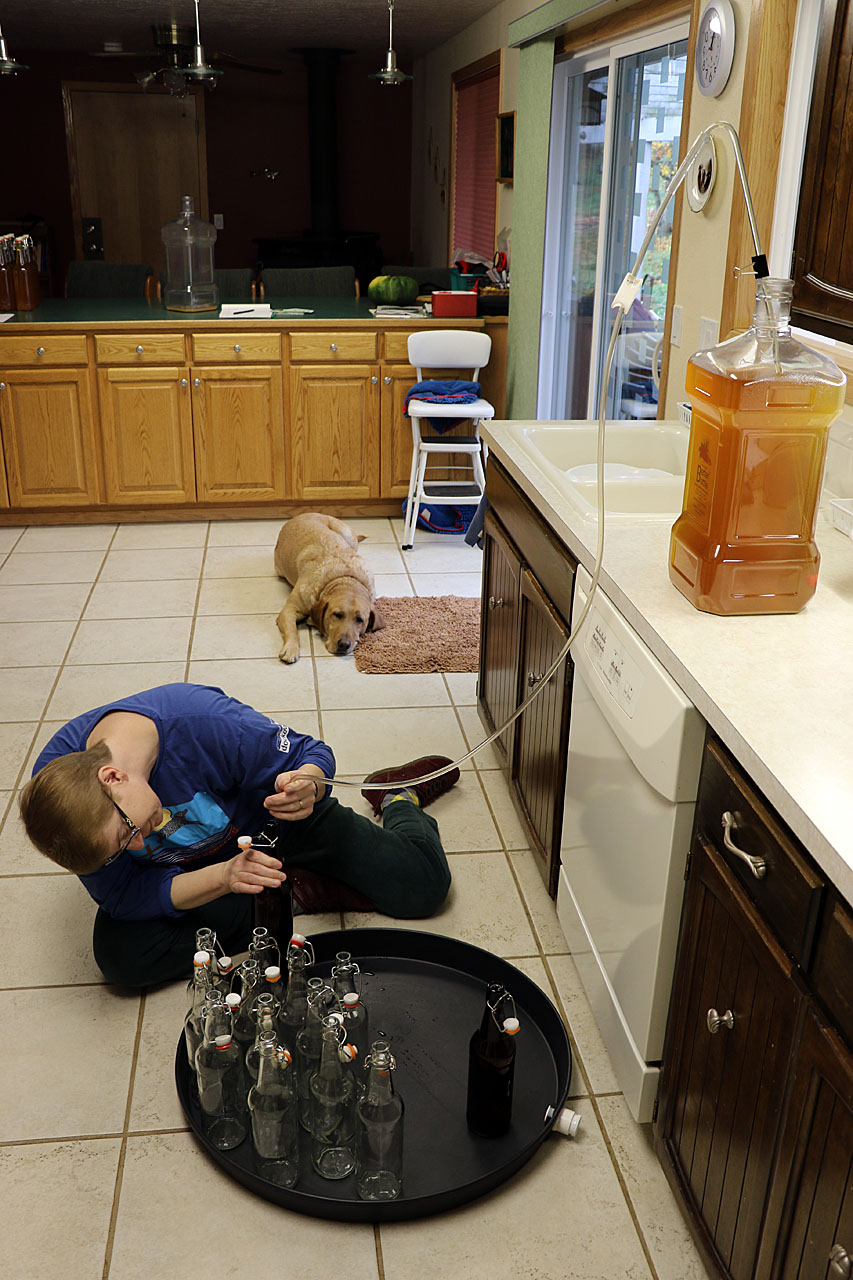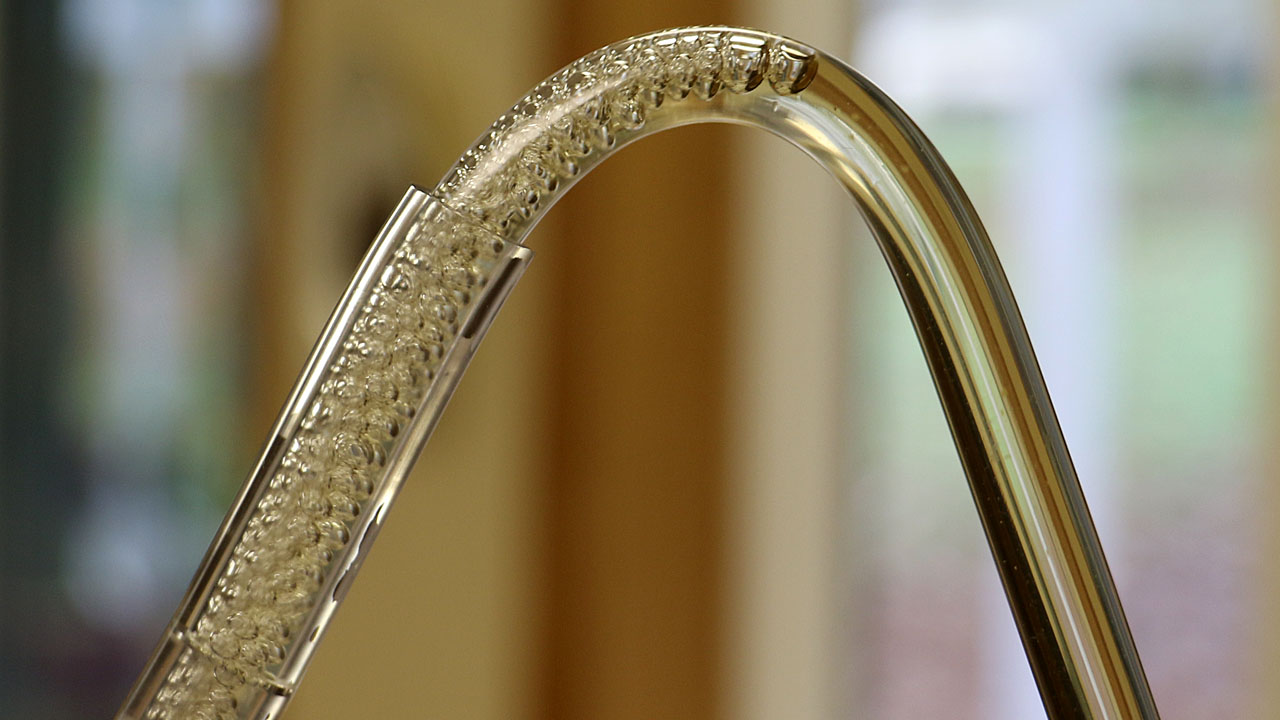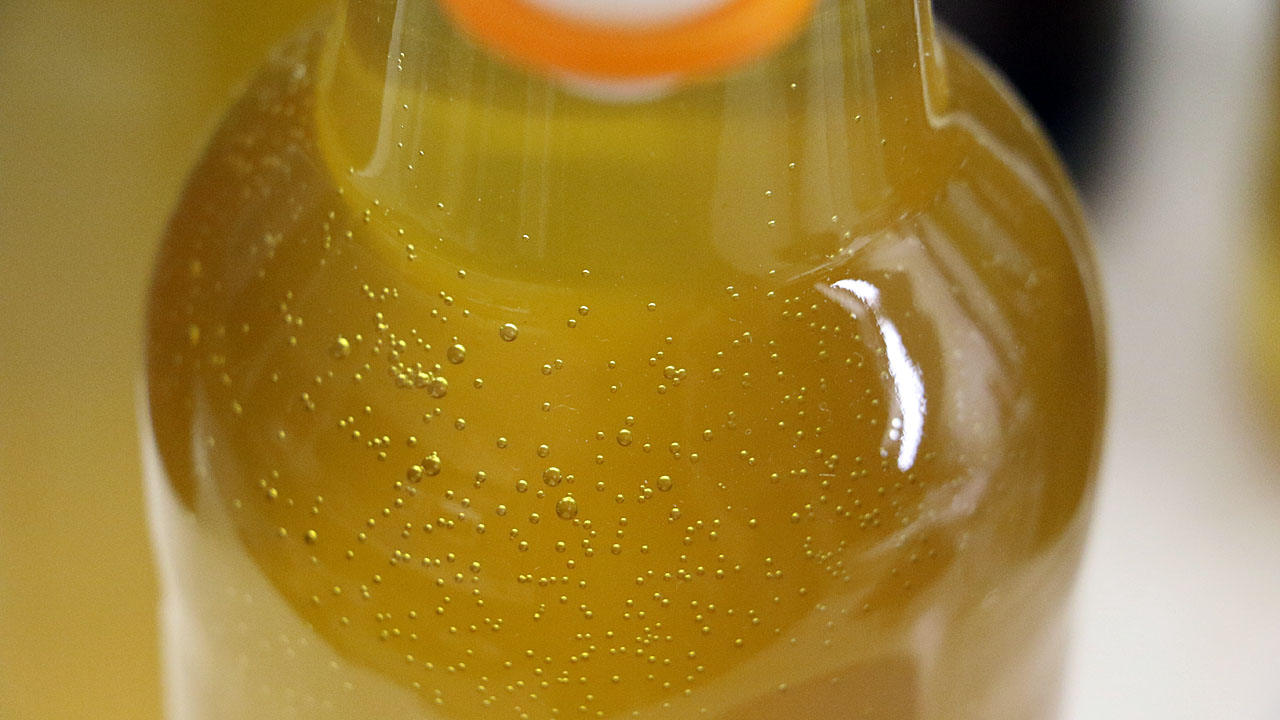siletzspey
Well-Known Member
After 2-3 months of aging in secondary/tertiary carboys, my wife and I racked everything into bottles. The odd part was... unlike the 71B apple and plum batches, the Pasteur Red apple batch produced some bubbles in the racking tube, and the Safale S-04 apple batch produced tons of bubbles. Everything tasted fine, and I tapped the bottles on a hard counter to evacuate the bubble prior to capping, but I am wondering if the bubbles are ok or bad?
Here's the racking setup. Hint - a cheap hot-water tank pan from your local hardware supply store makes for a great catch basin, or BBQ prep and shred basin.

When first siphoned in, there were no air bubbles throughout the tube. As the cider drained up the racking tube (right side), there were no air bubbles, but as soon as it rounded the bend and went down the tube (left side), bubbles spontaneously appeared en masse.

The bubbles seemed to dissipate quickly, and tapping the bottles on a hard surface caused the remaining bubbles to evacuate.

Several days prior, I did add ~50ppm k-meta to the pH ~3.7 cider.
Good or bad?
--SiletzSpey
Here's the racking setup. Hint - a cheap hot-water tank pan from your local hardware supply store makes for a great catch basin, or BBQ prep and shred basin.

When first siphoned in, there were no air bubbles throughout the tube. As the cider drained up the racking tube (right side), there were no air bubbles, but as soon as it rounded the bend and went down the tube (left side), bubbles spontaneously appeared en masse.

The bubbles seemed to dissipate quickly, and tapping the bottles on a hard surface caused the remaining bubbles to evacuate.

Several days prior, I did add ~50ppm k-meta to the pH ~3.7 cider.
Good or bad?
--SiletzSpey




